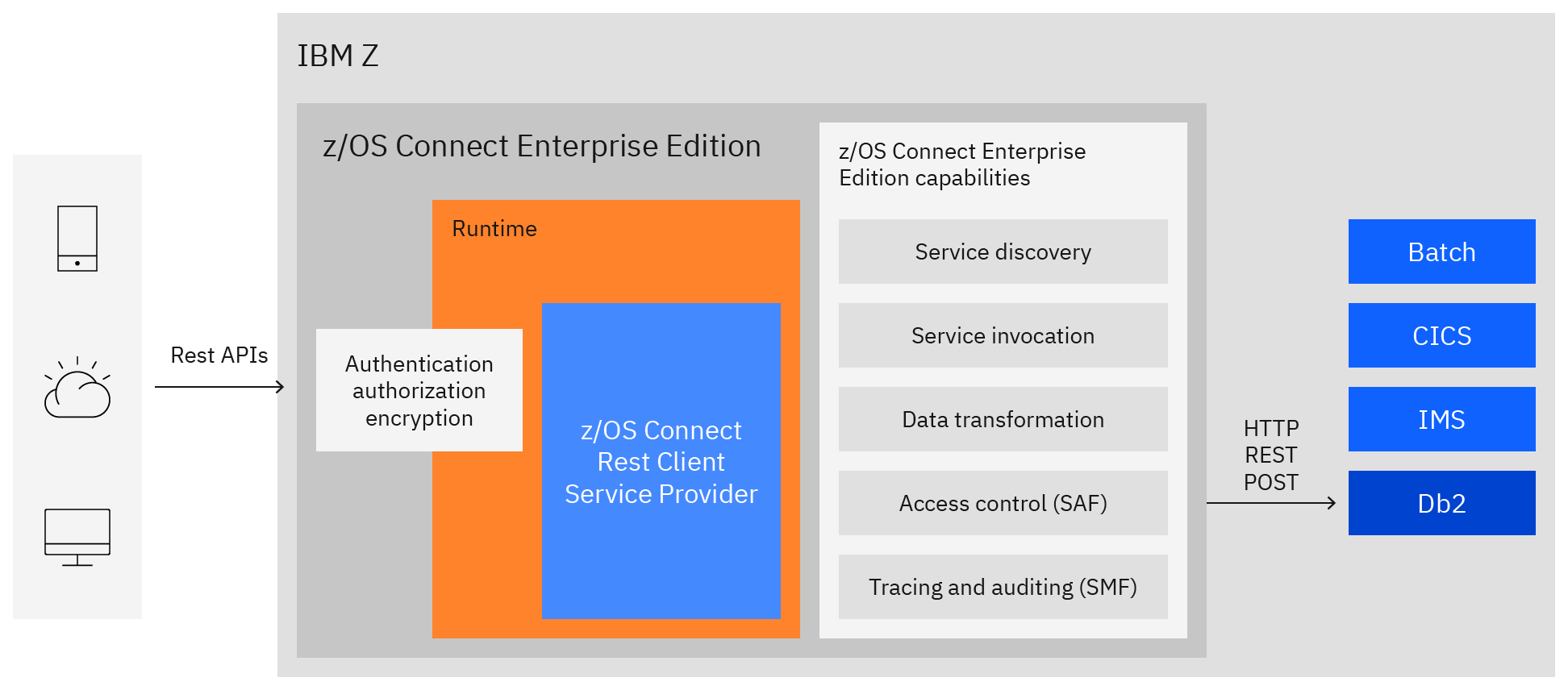Enable modern access to IBM Z data pattern
Provide modern support for accessing IBM Z® data through SQL-based query and through REST APIs. Simplify new application development by using this modern data access without disrupting data management and recovery processes on IBM Z to maintain data consistency.
Overview
← Back to Application modernization patterns
For decades, companies have tried to copy data from different operational systems into central data stores for various business cases such as operational business transactions and analytics. Establishing and maintaining data replication pipelines is expensive, time consuming, and it creates data quality and data latency challenges for consuming applications. Accessing data in place can accelerate transformation and improve its opportunity for success. It also preserves the existing data management and recovery processes.
Accessing consistent data avoids application design complexity by eliminating the need for compensation logic. It is a powerful foundation to satisfy complex information needs, such as infuse AI models and historical data, within service processing. You can dramatically simplify application development by using broad API support through SQL, REST, or both.
Solution and pattern for IBM Z®
IBM Z supports modern access to real-time transactional data in IBM® Db2®, IMS, and other data sources. Db2 and IMS can be accessed through SQL and REST API by using IBM® z/OS® Connect EE. Other data sources can be accessed through SQL or REST API by using IBM® Data Virtualization Manager for z/OS® along with z/OS Connect EE.
With Java® Database Connectivity (JDBC) support, new cloud applications that consume information from core Db2 and IMS systems can use SQL to detect the underlying data format and contexts from systems of record, which is often required.
You can access data that is stored in Db2 from anywhere by using SQL. Db2 for z/OS also supports native RESTful services to expose SQL and stored procedures as REST APIs when combined with z/OS Connect EE. You can invoke Db2 native RESTful services from z/OS Connect EE by using the z/OS Connect EE REST Client Service Provider.
With z/OS Connect EE, you can consume IBM Z data that is stored in Db2, IMS, or data sources through REST API. Applications anywhere can consume data that is stored on z/OS. It is a common interface for cloud-native applications. IBM Data Virtualization Manager for z/OS extends SQL access to data sources other than relational databases.
Advantages
Accessing IBM Z data in place provides several critical business benefits:
- Reduces the risk of data integrity
- Reduces the cost that is involved in data movement
- Increases data quality
- Preserves the existing data management and recovery processes
- Allows cloud applications to access the data at its underlying format and context
- Supports all popular access methods, such as SQL and REST APIs
- Benefits from higher performance by accessing data that is on IBM Z
Considerations
This data access pattern satisfies many data consumption needs. For example, you can run complex Db2 queries or resource-intensive queries through SQL by using the IBM Db2 Analytics Accelerator for z/OS. In fact, Db2 for z/OS can parse and resolve complex SQL statements. However, some of those queries might be resource-intensive Db2 queries. Those queries are often offloaded to be run by using the IBM Db2 Analytics Accelerator for z/OS. For example, “select * from TABLENAME where last_name like UCASE(“ALM%“) might be a resource-intensive query, as it might cause a table scan in certain situations. That example would not be an analytical query, but because it is a table scan, the accelerator would run it.
By using this pattern, you can deliver modern applications, as it facilitates and simplifies access to relational and non-relational IBM Z transactional data and combines that data with off-platform data. The pattern allows access and updates to live IBM Z data through traditional APIs such as SQL and, when combined with IBM z/OS Connect EE, to modern RESTful APIs. It also reduces the cost and delay of moving data to non-IBM Z platforms.
What's next
- Review these related patterns:
-
Review the Create a Db2 service and Create an IMS database service section of the z/OS Connect EE Start Scenarios.
-
Review the Calling an API from a System of Record (SOR) section of the z/OS Connect EE Quick Start Scenarios to learn how to call an API from a core application on z/OS.
-
Review the Application modernization for IBM Z architecture.
Contributors
Maryela Weihrauch
Distinguished Engineer, WW Data and AI for IBM Z Technical Sales and Customer Success Leader IBM
Sueli Almeida
DB2 for z/OS Cloud Enablement IBM

